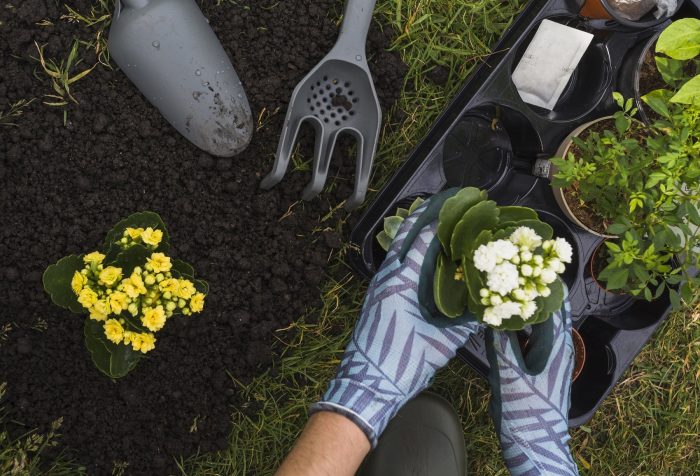1. Time for cleaning
Your garden is exposed to bad weather during the fall and winter and the leftovers of the storms. “You want to first start by clearing all of your garden beds and lawn of broken branches, leaves, and other debris that have collected,” says Chris Lambton, professional landscaper and host of DIY Network’s Yard Crashers. “It’s important to start these chores quickly, as your spring bulbs and plants should be popping out of the ground any day now. The sooner you clean out the beds, the less chance you have of stepping on the growing plants and damaging them.”
You should do the same with the trees and bushes in your garden. “To prep for spring, trim off any broken or dead branches,” he says. “Now is also a good time to prune and shape the tree.”
2. Prepare the tools
Now is the time to visit back the tool shed and reconnect with the tools you’ve neglected over the winter. “It’s almost time to use your tools again, so you want to make sure they are ready for the job,” says Lambton. “Clean off the tools with soap and water, and use mineral spirits on wood handles. The mineral spirits will help prevent the wood from splintering. I clean my tools every spring and fall, or if they are especially dirty.”
3. Prepare the soil
A little bit of TLC for the soil goes a long way. Make sure your soil is ready for planting. “To start, turn the soil over with a pitchfork and rake it out, clearing any weeds that may have grown,” he says. “I then add fresh compost from my compost bin—if you don’t have one, use store-bought compost or manure to add nutrients to the soil.”
It is the best to add compost or manure a couple of weeks before planting anything, in order to give the soil time to mix well with it and absorb all of the beneficial nutrients. Also, it won’t burn the roots of your new plants.
4. Make a plan
Knowing your zone will help you understand which flowers and vegetables are best for your location. You can also head to your local nursery to get planting recommendations from local experts. “Planning your garden is the most important part,” says Lambton. “I like to plant so that you get color blooming throughout the season—so mix perennial flowers with some annuals as this will help keep color in your yard longer. It’s also good to plant according to height, making sure that taller plants don’t block the sun from shorter ones.”
5. Maintain your garden
Maintaining the garden during the whole season is the key to success. “Once your flowers start blooming you will have to deadhead to promote more flowers (depending on the species), and it’s a good time to plant annuals to supplement your perennial flowers,” says Lambton.
Deadheading is when you cut off the drooping or fading flowers from the rest of the green, healthy stem. “The late spring is also a good time to put down a nice layer of mulch on the garden,” he says. “This will help hold down weeds while keeping in water for those long hot summer days ahead. It also will break down over the fall and winter and help add nutrients to the soil.”

